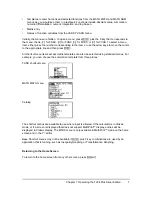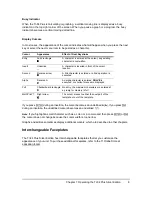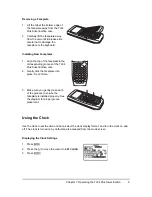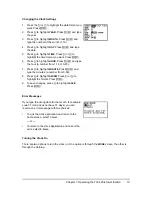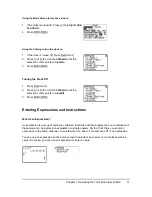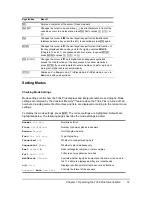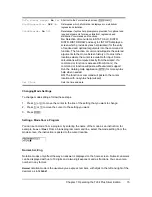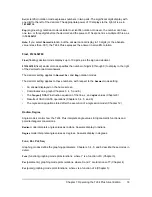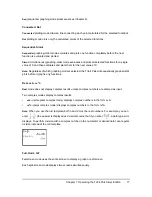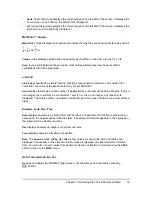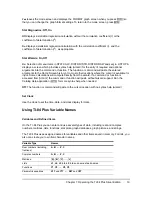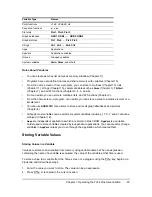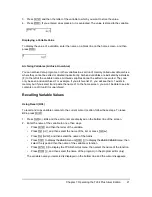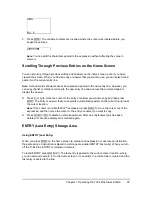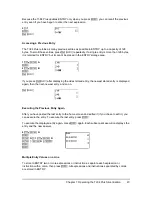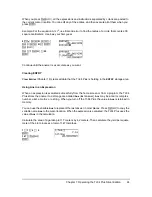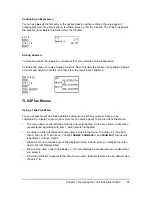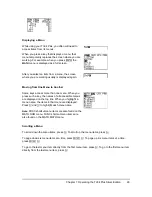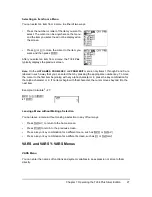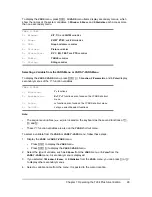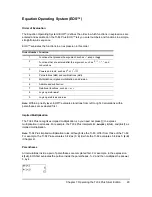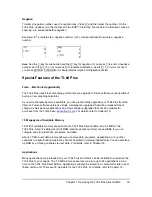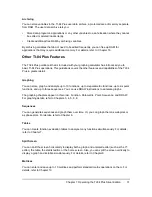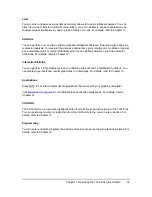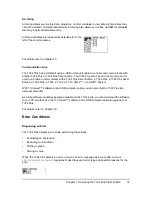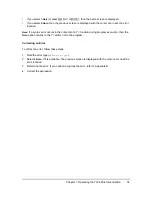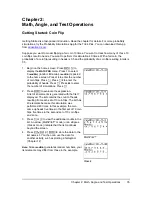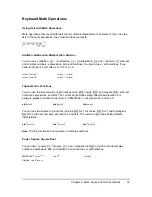
Chapter 1: Operating the TI-84 Plus Silver Edition
21
3. Press
ƒ
and then the letter of the variable to which you want to store the value.
4. Press
Í
. If you entered an expression, it is evaluated. The value is stored to the variable.
Displaying a Variable Value
To display the value of a variable, enter the name on a blank line on the home screen, and then
press
Í
.
Archiving Variables (Archive, Unarchive)
You can archive data, programs, or other variables in a section of memory called user data archive
where they cannot be edited or deleted inadvertently. Archived variables are indicated by asterisks
(
ä
) to the left of the variable names. Archived variables cannot be edited or executed. They can
only be seen and unarchived. For example, if you archive list L1, you will see that L1 exists in
memory but if you select it and paste the name L1 to the home screen, you won’t be able to see its
contents or edit it until it is unarchived.
Recalling Variable Values
Using Recall (RCL)
To recall and copy variable contents to the current cursor location, follow these steps. To leave
RCL
, press
‘
.
1. Press
y
K
.
RCL
and the edit cursor are displayed on the bottom line of the screen.
2. Enter the name of the variable in one of five ways.
•
Press
ƒ
and then the letter of the variable.
•
Press
y
9
, and then select the name of the list, or press
y
[
L
n
].
•
Press
y
>
, and then select the name of the matrix.
•
Press
to display the
VARS
menu or
~
to display the
VARS Y-VARS
menu; then
select the type and then the name of the variable or function.
•
Press
t a
to display the YVAR shortcut menu, then select the name of the function.
•
Press
|
, and then select the name of the program (in the program editor only).
The variable name you selected is displayed on the bottom line and the cursor disappears.

